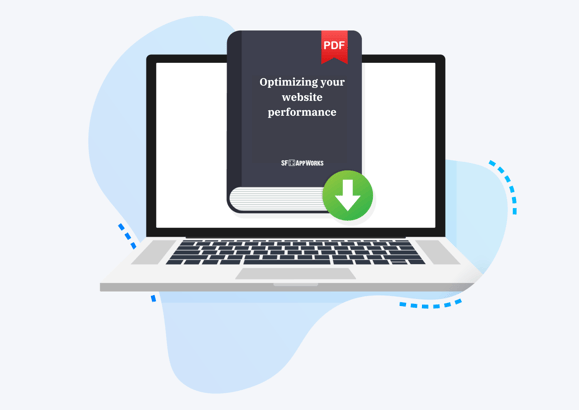MongoDB and Redis are both examples of contemporary NoSQL databases. Despite sharing the overarching label of 'NoSQL,' these databases diverge significantly in their storage models. While MongoDB persists data on disk, Redis operates as an in-memory store.
In this article, we will take a closer look at the important differences between MongoDB and Redis, including performance, speed, RAM usage, scalability, storage, and reviews. We want to keep you armed with the knowledge of what goes on behind the scenes, and this article should do just that when it comes to choosing the right data storage solution.
Related: Top-Ranked Software Development Company in San Francisco
What You Will Learn about Redis and MongoDB
- What these two data storages (Redis & MongoDB) are
- The pros and cons of using each one
- What is easiest to use
- Which is the fastest
- And more!
.jpg?width=795&name=c-d-x-85XLV4Po2mk-unsplash%20(2).jpg)
Photo via Unsplash, by C D-X
If you’re a tech specialist or developer who has been searching for data storage solutions, you’ve likely been presented with the “Redis vs MongoDB” debate that everyone seems to be talking about.
It makes sense why this is such a hot topic. Both of these solutions are incredibly popular and provide users with an ultra-simple overall structure that allows for excellent performance.
Still, in most situations, developers will need to choose one over the other for a specific project. So which one is ideal? We’re going to cover everything you need to know about these two platforms, their strengths, their weaknesses, and when each is most suitable.
Redis vs MongoDB Performance Comparison
First, Who Uses Redis and MongoDB?
When it comes to in-memory data structures, big companies have their own preferences based on capability and options.
Redis is the data structure server of choice for: Jet.com, Samsung, Intuit, UnitedHealthcare, Shopify, and TMZ.
MongoDB has popular customers as well, including The Weather Channel, eBay, Electronic Arts, Forbes, and Under Armour.
Comparing Redis vs MongoDB: Infographic
.jpg?width=450&name=Bright%20Pink%20Photo%20Background%20Process%20Infographic%20(8).jpg)
What is Redis?
Redis is an open-source and Berkeley Software Distribution (BSD) licensed platform. It serves as a memory data structure storage solution and is often used as a database, cache, and message broker. Redis can support data structures including elements like strings, hashes, sorted sets, range queries, bitmaps, hyperlogs, geospatial indexes, lists, sets, and streams.
Redis also features out-of-box replication, Lua scripting, transactions, and various levels of disk persistence. It also can provide high availability through the use of Redis Sentinel, as well as automatic partitioning with Redis Cluster.
Users can run atomic operations on Redis’ types, such as appending to a string or incrementing the value in a hash, plus computing set intersection and getting the member with the highest overall rank in a sorted set.
In order to achieve Redis’ ultimate top-tier performance ability, Redis works directly with a memory dataset. Depending on a user’s specific use case, one can persist it either by dumping the dataset to the main disk periodically, or by appending each individual command to a new log. In some instances, users simply need a feature-dense, network-based, in memory cache system. When this situation arises, the persistence feature can be disabled.
Other features of Redis include the ability to support simplified asynchronous replication, transactions, pub and sub, Lua scripting, the use of keys with a limited TTL (time-to-live), LRU (least recently lived) eviction of various keys, automatic failover, and much more. Users can pair Redis with a majority of programming languages used today.
Also, Redis excels in read performance across various workloads and shows improved write performance as workloads become more demanding.
Get a Free Copy of Our Latest eBook and Learn How To Make Better Digital Products

Advantages of Redis
There are a number of advantages to using Redis:
- Redis is extremely simple to set up out of the box.
- It is very easy to use and has a relatively small learning curve to deal with.
- Redis allows for persistence that users can choose to set up, and as a result, cache warming in the event of a system failure or crash is easy to deal with.
- Redis is a very decent caching solution that excels at what it does.
- Redis also isn’t just a plain cache solution. It also has advanced data structures that allow for many powerful and useful ways to save and query data that can’t be done with a basic key-value cache.
Disadvantages of Redis
No platform is perfect, so Redis does have some downfalls:
- Redis can, unfortunately, be difficult and tedious to deploy in larger cloud deployments, which may not be ideal for larger enterprises.
- The Redis database size is limited by the overall amount of RAM in the machine itself, so if the database size needs to be any larger, then clustering will need to be implemented, which is very intensive, tedious, and must be done manually.
- Redis does not feature built-in encryption on the wire.
- There is no role-based account control or RBAC available.
- As of now, there is not a seamless, mature clustering solution for Redis.
Take a look at this table which showcases the advantages and disadvantages of utilizing Redis:
.jpg?width=624&name=MongoDB%20does%20have%20a%20$lookup%20operator%20which%20acts%20as%20a%20join,%20but%20its%20not%20as%20efficient%20as%20a%20join,%20its%20a%20built-in%20mechanism%20put%20there%20to%20compensate%20the%20missing%20joins%20from%20classic%20SQL%20Databases.%20(3).jpg)
What is MongoDB?
MongoDB is a type of document database that has the scalability and flexibility that users would find attractive for querying and indexing. MongoDB has the ability to store data in workable documents, which means that fields can vary from document to document and data structure can be modified over time.
MongoDB is able to provide solutions to extremely complex issues and can manage large volumes of information.
MongoDB stores, processes, and executes data in the binary form and utilizes a very user-friendly representation of documents in the JSON format for data input and output. MongoDB’s command-line interface feature is also quite simple to use.
This platform’s data types are quite standard and look similar to programming languages with strict types, such as Java or C++. Users are able to view these data types in the form of strings in respective JSON files. MongoDB operates with binary representation in which each specific BSON type is represented by an integer and string identifiers for each type of individual value.
MongoDB is essentially a distributed database at its basic foundation. Because of this, extremely high availability, useful horizontal scaling, and geographic distribution are a part of the platform’s core function and the platform itself is easy to use. MongoDB’s document model is easy for users to learn and implement, all while still allowing for all of the various capabilities needed to create the most complex solutions to complex problems at any scale.
Related: 5 Tools to Help Your Website Stand Out
Advantages of MongoDB
MongoDB has some significant advantages:
- It is a more “traditional” common database that has advanced data manipulation features.
- MongoDB has a rich query language.
- MongoDB offers multi document acid transactions since their 4.0 update.
- Secure Sockets Layer (SSL), role-based access control (RBAC) and scale-out are all built into the foundation of the platform.
- If a user is already using MongoDB as their main database solution, then their operational and development costs will become quite low, as users will only have one main database to learn and manage rather than multiple databases.
Disadvantages of MongoDB
There aren’t many disadvantages when it comes to MongoDB, but here are a few worth noting:
- MongoDB does have a $lookup operator which acts as a join, but it's not as efficient as a join, it's a built-in mechanism put there to compensate the missing joins from classic SQL Databases.
- Structures are independent of one another, so there is a small learning curve.
- MongoDB is notoriously hard to secure properly without purchasing an Enterprise license, which can be a downfall for small startups or medium-sized businesses without a huge tech budget.
.jpg?width=621&name=MongoDB%20does%20have%20a%20$lookup%20operator%20which%20acts%20as%20a%20join,%20but%20its%20not%20as%20efficient%20as%20a%20join,%20its%20a%20built-in%20mechanism%20put%20there%20to%20compensate%20the%20missing%20joins%20from%20classic%20SQL%20Databases.%20(2).jpg)
Related: How to Budget For a Mobile App
Redis vs MongoDB
There are a number of key differences and similarities between Redis and MongoDB. While both are excellent storage solutions, one may be preferable over the other when it comes to your specific needs or project. These two platform solutions are the best choices for scenarios in which relational databases aren’t providing enough scalability, ease of use, or readability in terms of data representation.
Get a free copy of 'A Project Manager's Guide to Writing a Great RFP'

Similarities Between Redis and MongoDB
Both Redis and MongoDB are capable of working quite well with languages such as Python, JavaScript, and many other crucial data science programming languages or frameworks like C++, R, Scala, and MATLAB. This means that no matter what kind of data whether it be clinical or observational, either structure will fulfill your needs efficiently.
Because both platforms offer user-friendly “get” and “set” actions for specific data processes, both platforms will take the same amount of time to build very complex requests for the database in order to build a proper data processing scenario.
Related: The Big Four Things to Consider Before Creating a Website
Get a free copy of 'CIO's HandBook On How To Stay On Top Of IT Trends'

Differences Between Redis and MongoDB
Redis offers advanced data structures, like lists, sorted sets, strings, and bitmaps. With Redis Modules, it can even be used as a search engine or rate limiter. MongoDB has relational database features that give it strong consistency. You also have the ability to create documents without creating the document’s structure beforehand.
There are many pros and cons to these two data storage solutions, but the easiest way to figure out which is right for you is to look at their major differences. There’s a few characteristics tech specialists and developers look at to determine which one is right for their exact work and we’re going to focus on those here.
Data Storage
MongoDB is document oriented where documents are heterogenous and each has a unique key within a collection. Because of this, it’s typically used over Redis when structuring or modeling related information.
Redis stores data in-memory using various key values. It excels over MongoDB when working with rapidly changing data, but because most of that data needs to fit in memory, you need a foreseeable database size.
Replication vs. Clustering
Redis offers master - slave replication, meaning one or more slaves can be updated. Using Redis Enterprise, you can have a cluster manager and shared-nothing cluster architecture. Redis also handles sharding and re-sharding, offering high-availability and in-memory replication. These scale from racks to data centers to multiple cloud platforms.
When it comes to MongoDB, it’s a bit more flexible. MongoDB has a single-master replication with built-in auto-election. This means you can have a second database set up, which can be auto-elected if the initial database is unavailable.
Get a free copy of 'Optimizing Your Website Performance''

Official and Community Support
Redis was created in 2009 by RedisLabs, who still run it. It’s currently distributed using the open source BSD license. MongoDB was started two years earlier by 10gen, now known as MongoDB, Inc. Both of their parent companies maintain their documentation, which can be found here for MongoDB, Inc.
If you’re looking for support, both Redis and MongoDB have community support available. Redis users can use the mailing list or #redis on Freenode (irc://irc.freenode.net/#redis). RedisLabs provides all commercial managed support, giving you email alerts, backups, SSL and more.
MongoDB is available at StockOverflow, ServerFault, Community Support Forum, and Freenode IRC chat (irc://irc.freenode.net/#mongodb).The company also offers 24/7 enterprise support, including access to security updates and fixes.
Both have an active community as well, which provide another support option. Redis users can check out the Redis community page, which has instructions for local meet ups. MongoDB also has a community page on their website, offering webinars, events, groups, and MongoDB University.
Redis vs MongoDB: Reviews
Redis reviews
Redis boasts an average G2 rating of 4.55, derived from 125 user reviews as of December 2023.
According to a data architect from a large company, Redis stands out due to its user-friendly installation process, simple configuration consolidated into a single file, and exceptional performance, enabling seamless application scalability. This reviewer leverages Redis for diverse functions including caching files, temporary data storage, queuing, pub/subsystems, and more.
However, critiques of Redis encompass:
- inadequate user support documentation
- concerns regarding the scripting language
- limitations related to memory
MongoDB garners an average rating of 4.5 out of 5 stars on the esteemed technology review platform G2, based on feedback from 509 customers as of December 2023.
An engineer from a major company praises MongoDB for its seamless real-time data reading capabilities, simplified query composition, effortless linkage to diverse resources via APIs, and the delivery of excellent results within the application.
Criticisms of MongoDB include:
- the necessity for users to possess programming language proficiency
- challenges in distinguishing various features
- document size limitations
Redis vs MongoDB Performance and Locations
MongoDB is a document-oriented information storage solution, and as a result, is able to support the installation and setup of servers as well as cloud storage. In this platform, a document is represented by a JSON file, which is an easy and powerful method for a significant number of applications.
When we look at Redis, though, it is a key-value storage solution for information and it is located right on the user’s specific server, cluster, or cloud storage. This is a major difference from MongoDB.
Redis vs MongoDB Use Cases
When it comes to in-memory data structures, big companies have their own preferences based on capability and options. Jet.com, Samsung, Intuit, UnitedHealthcare, Shopify, and TMZ all use Redis as their data structure server. MongoDB has popular customers as well, including The Weather Channel, eBay, Electronic Arts, Forbes, and Under Armour.
Redis vs MongoDB Speed
MongoDB is schemaless, which means that the database does not have a fixed data structure. This means that as the data stored in the database gets larger and larger, MongoDB is able to operate much faster than Redis. Redis is only significantly faster when the stored data is relatively small in size.
Redis vs MongoDB: Which is Right For You?
Like any tech solution, the answer to the redis vs MongoDB performance debate depends on the type of development team working on a project, as well as the individual application needs.
If you are going to need a significant amount of querying, it would be less ideal to use Redis. This is because your data may be stored in varying styles of specialized data structures, personalized for each type of object for optimum functions. In MongoDB, those very same queries may be simpler to work with because the structure is more consistent across one’s data.
MongoDB offers ease of use and simplicity and features a much shorter learning curve for developers. However, Redis's specific approach requires a lot more effort to learn, but it does provide greater flexibility than MongoDB. A cache layer can also be better implemented through Redis.
If you’re interested in software and mobile app development, check us out at SF AppWorks! We specialize in mobile app development, web development, and multimedia design.
Related: Top Website Development Companies in the USA
Get a Free Copy of 'What to Expect from A Clickable Prototype?'
.png?width=579&name=clickable%20prototype%20form%20cover%20(5).png)
Who We Are
If you enjoyed this article, then you’ll love SF AppWorks' custom software development solutions. SF AppWorks provides innovative solutions to 21st century problems like designing powerful, streamlined applications and websites that users will appreciate.
Web development, UX Design, and rapid prototyping are some of our services that we offer to separate you as a company that believes in keeping up with the trends and always providing the best experience to your customers and users.
Turbocharge your website or app and get the digital transformation your business needs from our dedicated developers. Our innovation powered infrastructure focuses on rapid prototyping, performance, and security. Let us show you the SF AppWorks difference! Let's talk about your project!
Take a sneak peak at how we work at SF AppWorks on ideating, designing, and developing stunning websites and mobile apps:
Contributor credits: Raul Rene Lepsa



COMMENTS